

What to expect at a dental hygiene appointment?
You may have heard time and again that you need to visit your dentist at least twice a year to keep your mouth healthy, but do you know why it is important? Do you know what happens in a hygiene visit and what goes into keeping your teeth clean and healthy? In this blog, we give you a walkthrough of a typical hygiene visit at a dental office.
- Review of your medical history – everything is connected to everything in the body! Different diseases, disorders, illnesses and medications can have a profound effect on all the organs and tissues in the body. Plenty of oral diseases develop as a consequence of systemic disorders. Thus, it is important to explicitly inform your dentist and make him aware of any medical condition you are suffering from. This will help the dentist to zero in on the probable cause of your oral condition and administer the appropriate treatment.
- Thorough oral exam – Before your dentist starts the cleaning procedure, a comprehensive examination of your mouth is performed. Your teeth, gums, tongue and cheeks will be examined to identify any abnormalities or tooth decay . A complete periodontal screening will be performed which involves close examination of the gums. It will help to recognise gum disease or tissue damage to deeper gum attachments to determine if regular teeth cleaning or deep cleaning is required.
- Taking X-rays – Radiographs or x-rays are usually recommended in the presence of deep and extensive gum disease (Periodontitis) accompanied with loosening of teeth. In such cases, there will be a substantive loss of bone surrounding the teeth which will be well hidden under the gum tissues. X-rays will reveal these hidden anomalies and help the dentist to address these issue immediately. You may require X-rays only if your dentist suspects any severe form of gum disease, else it may be required once a year. To know more about dental X-rays read our blog here
- Tour of your teeth and gums – Your dentist or dental hygienist will brief you about the status of your oral health. They may use intra-oral cameras to show you the extent of gum disease or tooth damage. Your dentist will explain to you the probable causes for the condition and the action you need to take to prevent them from recurring in future. This will help you to understand the areas you need to focus on while you brush or floss your teeth.
- Cleaning and polishing – With all the necessary information and a clear treatment plan, your dental hygienist is ready to clean and polish your teeth. The process is called scaling. The dental hygienist will use specialised instruments called scalers which will break down and wash away germ filled deposits (plaque) and debris sticking to the teeth and gums. This is a painless procedure and at worst you may only feel a tingling sensation and mild sensitivity.
- Patient education – Once you are done with cleaning, your dentist will give you tips on keeping your mouth disease free. She will explain to you the right method of brushing and flossing. If you need any other restorative dental treatment, this is the time your dentist will inform you of further intervention. If you have been diagnosed with severe gum disease, you will be scheduled for more appointments for further treatment. It is important you clear all your doubts and queries at this stage with your dentist.
We understand it is hard and tedious to make time for a dental appointment, but a few minutes of inconvenience can give you good health for life. Hopefully, this blog will help you understand the importance of a dental hygiene visit and prepare you for taking good care of your teeth and gums!
To know more or book teeth cleaning appointment, contact Green Meadow Dental, 3579 B Berlin Turnpike, Newington CT 06111, (860)-865-0056. Many people from Hartford come to our office because we are conveniently located next to Target. Our flexible hours and family dental practice makes it easy for busy families to schedule visits for both parents and children. We also serve patients from areas like Hartford, Southington and Meriden.
Posted on behalf of Green Meadow Dental
3579B Berlin Turnpike Newington, CT 06111
Phone: (860) 865-0056
Email: [email protected]
Our Patients Say It Best
My first time coming to Green Meadow was awesome! Super clean, nice office. Super friendly and helpful staff. The best, most thorough dental cleaning I have ever had in my life by Keith. Dr. Mukund is very kind, patient, and knowledgeable. My dental assistant, forgot her name, was wonderful. I highly recommend their services! — Matthew H.
From the time I walked in the door for my first experience here, everyone was super friendly and welcoming. The office was extremely clean and pleasant. The dentist was totally honest and helpful in making decisions for my teeth. The hygienist was friendly and informative. He did an excellent job. Overall a good experience. — Janet D.
This has been the first dental office where I have felt genuinely cared for. The staff are exceptional. The doctor is very skilled at dealing with patients with anxiety; I suffer from PTSD and any kind of needles send me into panic. But I experienced no anxiety and felt absolutely no pain. I highly recommend them to anyone with anxiety. — Nichol M.
Staff is incredibly friendly and kind. They really seem to care about their patients. I'm writing this review from the dental chair after my cleaning, and I am surprised by the comfort of it. I haven't ever had a bad dental experience, but even the cleaning and scraping wasn't overly painful. They've made a regular out of me for sure! — Benjamin S.

A Dental Experience You'll Look Forward To.
Easily navigate to our office.
(860) 865-0056
Opening Hours
Same day emergencies.
Follow Us On

- Type 2 Diabetes
- Heart Disease
- Digestive Health
- Multiple Sclerosis
- Diet & Nutrition
- Health Insurance
- Public Health
- Patient Rights
- Caregivers & Loved Ones
- End of Life Concerns
- Health News
- Thyroid Test Analyzer
- Doctor Discussion Guides
- Hemoglobin A1c Test Analyzer
- Lipid Test Analyzer
- Complete Blood Count (CBC) Analyzer
- What to Buy
- Editorial Process
- Meet Our Medical Expert Board
Oral Hygiene Tips
What is good oral hygiene.
- When to See the Dentist
Frequently Asked Questions
Ensuring healthy teeth through good oral hygiene yields overall health benefits. Dental problems such as tooth decay and gum disease not only lead to tooth loss, but are associated with serious, chronic conditions such as heart disease, stroke, arthritis, and diabetes.
Along with proper toothbrushing twice a day and daily flossing , maintaining a healthy smile can also mean making dietary adjustments, limiting alcohol and tobacco use, and ensuring you’re keeping up with regular dental appointments. Here’s a quick overview of what you should keep in mind to protect your teeth.
Jessie Casson / Getty Images
Good oral hygiene, simply put, is a set of practices and habits that promote and protect your teeth and gums. But how can we tell our care is healthy? What defines good oral health? Current consensus is that good oral hygiene is the ability to speak, chew, and make facial expressions without pain, discomfort, or loss of confidence. It’s, therefore, an essential aspect of mental and physical health.
Fundamentally, the aim of a good oral hygiene routine is to prevent the buildup of plaque and tartar on the teeth. Related and equally important, it’s working to stop the progression of or deter gum disease and gingivitis (or periodontitis , a severe form that arises in the absence of treatment).
How Poor Oral Hygiene Can Affect You
How can poor oral hygiene impact your health? Here’s a quick breakdown:
- Cavities , gum disease, and other issues can lead to tooth loss, which can impact your bite and ability to chew and eat.
- Untreated gum disease is associated with chronic health conditions, including heart disease , stroke , and diabetes .
- Poor dental health and appearance of the teeth can significantly impact mental health, raising self-consciousness and lowering self-esteem.
- Not getting timely dental care and cleanings reduces the chances of diagnosing and treating oral cancer .
How to Practice Good Oral Hygiene
Ultimately, good oral hygiene is more of a journey than a destination. Not only does it require adopting and adhering to positive habits, it means being ready to learn ways to get even better at caring for your teeth and gums. Here are some key points to keep in mind.
Brush Thoroughly Twice a Day
It’s common knowledge that regular and thorough toothbrushing twice a day is a cornerstone of dental hygiene. Every morning and every night, spend about two minutes brushing your teeth, with 30 seconds for each side (lower front, lower back, upper front, and upper back).
Keep in mind that you should replace toothbrushes regularly (every three to four months or if the head is worn out and loose).
Use Dental Products That Contain Fluoride
The mineral fluoride can also help strengthen teeth. Choose toothpaste that contains fluoride, such as those approved by the American Dental Association (ADA).
Don’t Neglect Flossing
Along with brushing, flossing between the teeth daily is critical to protecting dental health. In addition to standard floss, other means can make this even easier, including using pre-threaded flossers or water flossing devices.
By removing food trapped between the teeth and along the gumline, flossing gets at food particles that brushing isn’t able to access.
Practice Brushing Techniques
Regular brushing is important, but it’s also crucial to employ the correct technique. According to the ADA, here’s what you should keep in mind:
- The right size : Make sure the toothbrush you use is appropriately sized, allowing you to access every dental surface in your mouth.
- Appropriate angle : Generally, keep your brush at a 45-degree angle to the gums.
- Get all the sides : Make sure you are brushing the outer, inner, and chewing surfaces of your teeth.
- Short strokes : Employ gentle, brief strokes, moving back and forth as you brush. Brush inner surfaces of front teeth with vertical (up and down) strokes.
- Tongue care : Since the tongue can also be a repository for plaque-causing bacteria, make sure you brush it as well.
Eat a Healthy, Well-Balanced Diet
What you eat and drink can also impact your dental health. Generally, it’s a good idea to stick to a healthy, well-balanced diet. This means emphasizing the following:
- Fiber-rich foods , such as beans, greens, apples, whole grains, and broccoli
- Dairy products, such as yogurt and milk
- Green and black tea, which contain polyphenols that can combat bacteria formation in the mouth
- Chewing sugarless gum, which can produce saliva in the mouth, protecting teeth
- Water and foods with fluoride
In addition, some foods and drinks need to be avoided, including:
- Sticky or gummy candies
- Hard candies
- Starchy foods, such as soft bread, chips, or pastries
- Soft drinks and sodas, especially those with sugar, as well as phosphoric and citric acids
Avoiding Dry Mouth
An unintended side effect of some medications is dry mouth, which can impact dental health. Talk to your dentist about your options if you know or suspect the drugs you’re taking are leading to this condition.
Limit Alcohol and Tobacco Products
Among the many negative health effects of drinking alcohol are significant impacts on dental health. Alcohol is a noted risk factor for oral cancer, and consumption has been associated with developing periodontitis.
In addition, smoking or using smokeless tobacco is closely associated with gum disease. These habits weaken the immune system, making it easier for gingivitis and periodontitis to develop.
Use Mouthwash
Brushing and flossing are the best practices for preventing tooth decay and gum disease. Some people also choose to use mouthwash . Not all products are the same, and some—cosmetic mouthwashes—don’t really go after the bacteria that cause gingivitis and bad breath.
Generally, you’re best served using therapeutic mouthwashes. Look for the following active ingredients in over-the-counter (OTC) and prescription mouthwash:
- Cetylpyridinium chloride
- Chlorhexidine
- Essential oils
As with toothpastes, it’s a good idea to choose a mouthwash that is approved by the ADA.
Visit Your Dentist Regularly
Regular dental visits prevent plaque and tartar buildup and ensure that there are no signs of other dental issues or cancer. As with many aspects of health, the sooner problems are caught—and the more proactive treatment is—the better off the outcomes.
How often you should visit the dentist depends on your specific case, but if you have no problems, schedule at least one appointment a year for cleaning and evaluation. However, if you have gum disease, cavities, or other oral health issues, you may require additional work.
The best strategies for protecting your dental health include brushing properly twice a day, daily flossing, limiting or stopping alcohol and/or tobacco use, avoiding sugary foods and sodas, and getting regular dental care.
When to See the Dentist
Another important aspect of good oral health is knowing when it’s time to see a dentist. As noted above, the sooner you get help, the better off you’ll be. Signs it’s time to make an appointment or seek emergency care include:
- Tooth pain or loss
- Bleeding gums
- Difficulty chewing or swallowing
- Constant/consistent dry mouth
- Jaw pain (especially when opening/closing the mouth)
- Spots and sores on the tongue, gums, or inside of the mouth
- Feelings of self-conscious about your teeth
Some conditions and treatments can contribute to dental problems. Make an appoint with your dentist if you are experiencing or undergoing any of the following:
- Chronic health issues, like heart disease, diabetes, or human immunodeficiency virus ( HIV )
- Chemotherapy and radiation therapy
Ensuring good oral health is important not only to help with self-esteem, but for overall wellness and health. Dental problems like tooth decay and gum disease can cause chewing problems and discomfort. Good dental hygiene practices include brushing properly twice a day, flossing once a day, steering clear of tobacco, alcohol, and sugar foods and drinks, and getting regular care from your dentist.
A Word From Verywell
It can be easy to overlook dental care. All too often, the health of your teeth takes a back seat to other issues. But it’s never a good idea to put off oral care. Beyond ensuring a healthy, bright smile, keeping up with good oral health yields numerous benefits and should be considered part of an overall health and wellness plan.
Critical in all of this is that you are mindful of how your teeth and mouth are feeling. If something seems awry, don’t hesitate to reach out to your dentist. The sooner you get the care you need, the better off you’ll be.
Keys to maintaining oral hygiene include:
- Brushing properly twice a day
- Flossing between teeth once a day
- Ensuring you are drinking enough water
- Avoiding sugary foods and/or sodas
- Limiting alcohol intake
- Quitting smoking and using smokeless tobacco
- Seeing your dentist regularly (at minimum once a year for a cleaning and checkup)
Discoloration and staining of the teeth can be difficult to take on, and sometimes brushing alone won’t be able to correct the issue. Current whitening and brightening approaches include:
- In-office treatments : Dental hygienists or dentists employ a range of substances and tools to help improve the appearance of your teeth. Abrasives, colorants, peroxides, and other agents may be used to restore white color to the enamel.
- At-home remedies : Though care needs to be taken, whitening strips, gargling with hydrogen peroxide, and oil pulling are all methods that may be attempted at home. These may be effective—especially along with a good oral hygiene routine—but in-office work tends to yield better results.
- Prevention : Limiting sugary foods and tobacco use and keeping up with regular schedules of cleaning, brushing, and flossing are all effective ways to prevent teeth from yellowing in the first place.
There are several ways that poor oral hygiene can impact you:
- Tooth decay and cavities can cause pain, discomfort, and lead to tooth loss.
- Gum diseases like gingivitis and periodontitis are associated with heart disease, stroke, diabetes, and other chronic conditions.
- Tooth loss can affect your ability to bite and chew, which can impact diet.
- Dental issues can have a severe impact on your self-esteem and feelings of self-worth.
- Missing dental appointments increases your chances of missing signs of oral cancer.
Centers for Disease Control and Prevention. Basics of oral health. Oral Health. Updated January 4, 2021.
Centers for Disease Control and Prevention. Oral health tips: what can adults do to maintain good oral health . Updated November 9, 2021.
Glick M, Williams D, Kleinman D, Vujicic M, Watt R, Weyant R. A new definition for oral health developed by the FDI World Dental Federation opens the door to a universal definition of oral health . J Am Dent Assoc . 2016;147(12):915-917. doi:10.1016/j.adaj.2016.10.001
Office of Disease Prevention and Health Promotion. Oral health . Healthypeople.gov. Updated October 27, 2021.
American Dental Association. Brushing your teeth . Mouthhealthy.org.
University of Rochester Medical Center. The best and worst foods for your teeth . Health Encyclopedia.
Centers for Disease Control and Prevention. Smoking, gum disease, and tooth loss . Updated February 15, 2021.
Department of Scientific Information, ADA Science Institute. Mouthwash (mouthrinse) . American Dental Association. Updated August 29, 2019.
National Institutes of Health. Taking care of your teeth and mouth . National Institute on Aging. Updated March 13, 2020.
American Dental Association. Top reasons to see a dentist . Mouthhealthy.org.
Epple M, Meyer F, Enax J. A critical review of modern concepts for teeth whitening . Dent J (Basel) . 2019;7(3):79. Published 2019 Aug 1. doi:10.3390/dj7030079
By Mark Gurarie Gurarie is a freelance writer and editor. He is a writing composition adjunct lecturer at George Washington University.
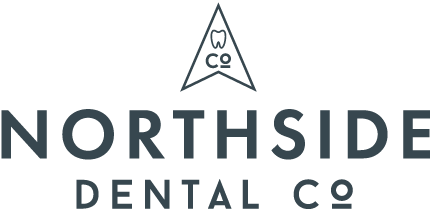
How Long Are Hygienist Appointments and Other Common Dental Procedures?
Aug 16, 2021
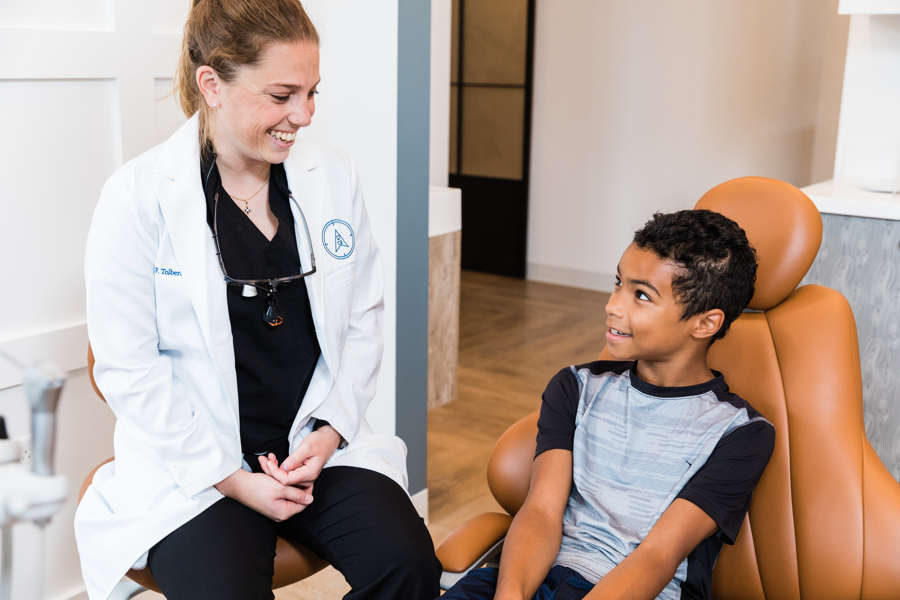
Getting children to sit still for more than 30-minute dental hygiene appointments can be a challenging task. But for adults, a dental appointment for cleaning usually takes about one hour. However, if a more extensive deep cleaning is needed, those hygiene appointments can take two to three hours (usually broken up into two appointments).
With all the different types of dental cleanings, it can be unclear how long a hygiene visit to the dentist or other procedures will take.
If you’re wondering, “ How long is a dentist visit ?” you’re in the right place.
In this article, we’re providing expert information on the most common hygiene and restorative dental procedures and how long they take on average. You’ll receive answers to questions like:
- How long are routine hygienist appointments?
- What happens at a dentist appointment for fillings, crowns, or gum disease?
- How do I make an appointment with a dentist for an emergency?
Keep reading to learn more about dental hygiene appointment breakdown time s.
How Long Do Dentist Appointments Take ?
To help you understand what happens at a dentist appointment , here are the top five dental procedures and the average time you can expect them to take.
1. Routine Cleaning
What’s involved:.
A routine hygiene visit to the dentist is the most common dental procedure. The procedure will include some combination of the following:
- Scaling (scraping plaque and tartar off the surface of teeth)
- Gum health check
- Cavity check
- Fluoride treatment
- Oral cancer check
A dental hygienist will perform most of these actions, and a trained dentist will perform the cavity and oral cancer check.
Dentists recommend scheduling a routine checkup and cleaning every 6 months (or more frequently if you’re at higher risk for gum disease).
Procedure timeframe:
Routine cleaning time is office-specific, but most dentists perform the cleaning over 45-60 minutes.
For children, some offices will offer shorter, 30-minute dental hygiene appointments .
2. Cavity Fillings
If a routine cleaning is the most common reason people go to the dentist, cavity fillings are a close second.
Cavities form when bacteria on our teeth produce acids that break down the tooth enamel (the hard, outer layer of the tooth). If you don’t regularly remove these bacteria through good oral hygiene and routine dental visits, the acids will create holes (cavities) in a tooth.
Are you wondering what to expect at your first dentist appointment for cavities?
To treat cavities, dentists follow this general procedure:
- Identify the tooth/teeth that have cavities
- Numb the affected tooth, gums, and surrounding area
- Drill out the infected area (to keep the bacteria from spreading)
- Fill in the cavities
Recognizing cavities early and filling them is essential to long-term oral health. So if you think you have cavities or your dentist identifies some, it’s best to get them filled quickly.
The answer to “ how long do dentist appointments take for cavity fillings?” depends on the severity and number of cavities you need your dentist to fill.
One or two small cavities will take roughly 30 minutes. However, when you have multiple large cavities, it could take one and a half to two hours.
Additionally, dentists will usually only numb one side of your mouth per visit. If you have cavities on both sides of your mouth, it may require multiple visits to get all your cavities filled.
3. Scaling and Root Planing or Deep Cleaning
Scaling and root planing (SRP) is another fairly standard dental procedure.
You may not have realized it, but every time you go to the dentist for a routine check-up, the dentist or hygienist will scale your teeth—using a metal tool to scrape plaque and tartar off the surface of your teeth.
SRP is a more serious procedure that treats advanced gum disease (periodontitis) . It takes scaling one step further to help remove bacteria inside the gum tissue to restore gum health.
So, what happens at a dentist appointment for scaling and root planing?
Instead of simply scraping (scaling) the outer surface of your teeth, the hygenist will scrape down into the gum tissue of the affected tooth. The goal is to remove the bacteria from the base of the tooth and create a clean space for the gum tissue to reattach to the tooth.
An SRP isn’t particularly painful, because the hygienist will numb your mouth prior to the procedure. However, most patients will experience mild discomfort in their gums for a few days following.
Full-mouth scaling is easily done within a routine 60-minute visit, but how long is a dentist visit for SRP?
Like cavity fillings, the time it takes for an SRP procedure depends on:
- The severity of your gum disease
- The amount of affected gum tissue
Less severe periodontitis with a smaller affected area will take less time to clean than a more severe condition with a greater area of affected gum tissue, typically two hour-long appointments. A full mouth treatment usually requires two appointments that will each take 60-90 minutes.
After receiving an SRP treatment, routine dentist appointments for cleaning will include more time spent cleaning your gums and, therefore, also be slightly more expensive. If you’re prone to gum disease, these increases will most likely last the rest of your life.
Dentists can fix or replace the tooth with a crown when you break a tooth or have a tooth fall out (whether from trauma, gum disease, or other reason).
Crowns are tooth-like caps that fit over the affected tooth or fill a hole where a tooth previously sat. They look and feel like natural teeth to restore mouth function.
For permanent teeth, dentists usually make crowns of tooth-colored material. But for children’s baby teeth, dentists often use silver crowns that are less expensive and will fall out when the baby teeth come out.
Receiving a crown is a two-step process requiring two visits:
- Step #1: At your first visit, your dentist will take an hour and a half to two hours to prep the tooth for the crown. They’ll also take an impression of your tooth and send it to the lab where they make the crown.
- Step #2: After about two weeks, the lab will have completed your crown, and you’ll go back to your dentist to have the final crown put in place.
5. Emergency Dentistry
Dental emergencies often arise from trauma (e.g., collision during a sport) or prolonged tooth decay that someone didn’t treat immediately.
The most common emergency procedures include:
- Fillings for chipped teeth
- Crowns for chipped teeth
- Root canals
Many individual practices have dentists on-call that can handle emergencies , and there are also specific emergency clinics for those who don’t have a regular dentist.
Procedure time frame:
It’s usually not until someone encounters an emergency that they ask, “ How soon can I get a dentist appointment ?”
If you’re currently an established patient at your dentist’s office, you should be able to make an appointment either the same day or the following based on the emergency type.
If you’re not currently a patient, most offices will usually try to see you as quickly as they can. However, their priority will go to current patients, which might mean waiting until the next day to schedule a 30-minute consultation. This consultation will often include an x-ray and time spent looking at the specific tooth (not the whole mouth) to diagnose the problem.
Now that you know more about the most common types of dental procedures and how long they take, you may want to know, “ How do I make an appointment with a dentist in Richmond, VA?”
Schedule Your Dentist Appointment for Cleaning Today
There are many dental procedures varying in time, from 30-minute dental hygiene appointments for kids to two-hour scaling and root planing procedures for periodontitis.
To help you prepare for your next (or first!) dental appointment, we walked through five of the most common reasons people visit the dentist:
- Scheduling a routine dental appointment for cleaning
- Having cavities filled
- Receiving a deep cleaning for periodontitis
- Getting crowns made and placed
- Needing emergency dental care
We also helped answer the question, “ How long do dentist appointments take ?” for each of these five procedures.
At Northside Dental Co in Richmond, VA, we offer comprehensive dental care to patients of all ages. Our trained dentists are ready to provide:
- 30-minute dental hygiene appointments for kids under four
- Restorative procedures like crowns or fillings
- Veneers and other cosmetic dentistry
- Same-day emergency services to current patients
Whatever your dental needs, our staff will meet and exceed all your expectations.
Schedule your appointment online or give us a call at 804-767-3410 today. New patients are always welcome!
Recent Posts
- Exploring the Best Alternatives to Dental Implants
- Do I Need a Dental Deep Cleaning?
- What to Expect With Dental Implant Treatment
- Everything You Need to Know About Teeth Removal for Dentures
- Comprehensive Guide to Dental Crown Treatment in Richmond, VA
Sign Up For Our Newsletter
Share this article.

- OFFICE TOUR
- NO INSURACE
- RESTORATIVE
- BOOK ONLINE
- CALL: 804-767-3410
- 3404 HERMITAGE RD. RICHMOND, VA 23227

Dentaly.org is reader-supported. When you buy via the links on our site, we may earn an affiliate commission at no cost to you. Learn more.
Find a Hygienist Near Me: Your Guide to Teeth Cleaning in Your Area
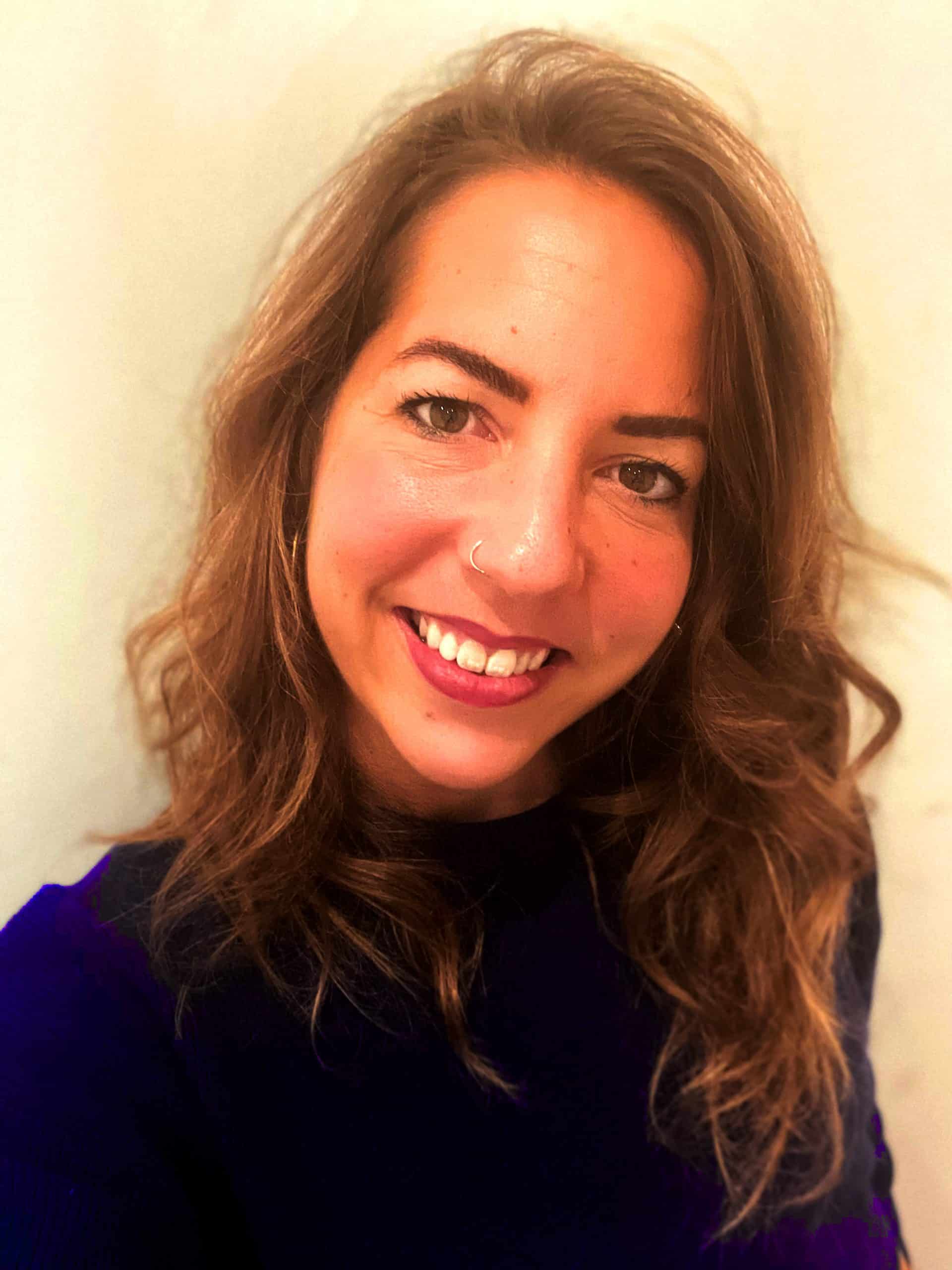
A dental hygienist is an integral part of keeping your teeth clean and healthy — and it's important to see your local hygienist at least once per year, and preferably twice per year.
In this article, we'll talk about how you can find a dental hygienist near you .
We'll also go into:
- What dental hygienists do
- How they differ from dentists
- How much their services cost
Keep reading, or call 866-383-0748 right now if you want to be connected with a local dental hygienist who is available to treat you now. You'll connect with a live operator who will put you through to a hygienist in your area.
Click here to get connected or call 866-383-0748 (toll-free, 24/7)
You can also read more about how to find other dental specialists .
What is a dental hygienist?
A dental hygienist is a licensed oral health professional that has studied and been trained in the prevention and treatment of oral diseases. Their main goal is to protect teeth, gums, and other oral tissues, as well as the general health of the patient.
Hygienists study at accredited colleges that offer dental hygiene education programs, and to graduate, they must take a natural board examination as well as a clinical exam before they receive their license to practice.
Are hygienists dentists?

Hygienists aren't dentists — unless a hygienist has also graduated from dental school and decided that they prefer being a hygienist — which also happens sometimes.
That aside, the easiest way to distinguish a hygienist from a dentist is that a dentist is a doctor and a hygienist is not.
You might have been mistaking a dental hygienist for a dentist or vice versa, but it's actually pretty easy to tell them apart, based on the duties they perform during your checkup.
Essentially it comes down to this:
- A dentist conducts the actual examination of your teeth and then administers the treatment
- The hygienist cleans your teeth and aids in disease prevention
Check out the following video where dental hygienist TeethTalkGirl is joined by a dentist and they go into the details of the differences between a dentist and a hygienist:
Why do I need to go to the hygienist?
It's critical to visit your dental hygienist every six months or at least once per year because even with twice-per-day brushing, some dental plaque is bound to build up on your teeth.
That's where bacteria lingers and grows, excreting acid which eats away at your enamel, creating decay and eventually cavities.
A trip to your hygienist can stop the bacteria in their tracks, plus your teeth will look a lot brighter once any tartar or plaque is removed.
Your hygienist will also be able to let you know if there is anything you should be doing differently in your dental hygiene routine.
What services can a dental hygienist provide?
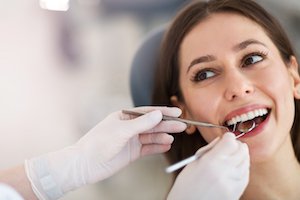
Dental hygienists provide a wide range of essential services that aid in the prevention of oral disease. These range from simple cleanings to preventive sealants and x-rays .
- Review dental history: Hygienists conduct a medical history on the patient so that they can understand any previous dental work done or any preexisting medical conditions. This also helps them come up with a personalized treatment plan for the patient.
- Screening : Your hygienist will check for decay or oral disease before any dental work is performed.
- Dental cleanings : This takes up most of your appointment. Your hygienist will use their special tools to remove plaque, tartar, and stains from teeth. They will also advise on proper cleaning techniques. They may recommend a deep cleaning in some cases.
- X-rays : X-rays can help prevent problems so they can be treated early on. They can spot cavities, infections, gum disease, and tumors.
- Preventive care : A hygienist can apply preventive care like fluoride treatments and sealants which protect teeth between appointments.
- Education : Dental hygienists are critical in instructing patients of all ages in best practices for brushing and flossing so that they can take good care of their teeth at home in between appointments.
How much does a dental hygienist cost?
The table below shows the costs (approx) of the services provided by a dental hygienist. Keep in mind these costs are shown without insurance and will vary depending on where you live.
If you don't have dental insurance, dental discount plans can go a long way in helping lower the costs for basic services like dental cleanings.
Dental hygienist training
To become a dental hygienist you can get an associate's degree or a bachelor's degree in dental hygiene. You'll need to take a couple of years of prerequisites of courses like chemistry and microbiology before spending two years in hygiene school.
During hygiene school, prospective hygienists get practical experience seeing patients and learning about pharmacology, different dental materials, diseases, and more.
At the end of their courses, hygienists must take the written national board exam, as well as a state clinical board. Different states have additional requisites that students may have to complete.
Finding a dental hygienist near you
To find a dental hygienist near you you can call 866-383-0748 24/7 and speak with a live operator who will be able to match you with a hygienist nearby according to your needs.
A dental hygienist is a licensed oral health professional trained in the art of cleaning teeth, conducting screenings for oral disease and problems like decay and cavities, and helping to prevent oral disease.

It's essential to visit a dental hygienist at least once a year, and your hygienist or dentist may recommend that you go in twice per year for a cleaning, as does the ADA .
Finding a dental hygienist near you is easy — just call 866-383-0748 and you'll be connected with an operator who will match you to a nearby hygienist.
While you're at your checkup, your dentist may recommend you visit a periodontist , an endodontist , or an orthodontist so be sure to read up on those services accordingly.
A dental hygienist is a licensed oral health professional that has studied and been trained in the prevention and treatment of oral diseases. They protect teeth, gums, and other oral tissues.
How much does a dental hygienist cleaning cost?
A cleaning from a dental hygienist can cost anywhere from $75 to $200. It could also cost less — it just depends on your particular hygienist, and where you live.
Mouthhealthy.org: Your top 9 questions about going to the dentist — Answered! Consulted 24th October 2022.
Humana is a trusted dental coverage option in the US, renowned for its extensive network of over 335,000 participating dentists. With headquarters in Louisville, KY, Humana, Inc. is a for-profit healthcare organization that generated revenues surpassing $92 billion in 2022. Beyond financial success, Humana has received prestigious accolades, including Forbes’ “JUST 100” list and top rankings for customer treatment, mail-order pharmacy services, corporate responsibility, and diversity.
Discover the Humana Extend dental plans, designed to provide comprehensive coverage for dental, vision, and hearing benefits. These plans cater to consumers seeking inclusive dental care, with options like coverage for dental implants. Inspired by customer feedback emphasizing the importance of whole-person care, Humana Extend represents a transition from traditional dental insurance. Experience the next level of dental coverage with Humana Extend.
What to Expect During Dental Cleanings

In this article
Key Takeaways
- Routine dental cleaning or prophylaxis cleaning involves an exam, plaque and tartar removal, prophy polish, and fluoride treatment
- The procedure is quick and painless
- Dentists recommend a dental cleaning once every six months
- Routine dental cleanings can help control plaque and tartar
- It can also help prevent gum disease and maintain oral health
What is a Prophylaxis Teeth Cleaning?
A prophylaxis dental cleaning is the most common type of teeth cleaning a dental hygienist does. It usually takes 45 to 60 minutes.

Dentists recommend you get this procedure every six months for preventative care. Regular dental cleanings are essential to:
- Maintain good oral health
- Prevent gum disease
- Stop the progression of tooth decay
- Provide education on oral hygiene
Other Types of Teeth Cleanings
Prophylaxis cleaning is the most common type of teeth cleaning. If you properly care for your oral health, it may be the only cleaning you’ll ever need.
However, there are other types of dental cleanings for more severe issues, such as:
- Scaling and root planing — Deep cleaning of the gums performed on patients with gum disease
- Periodontal maintenance — Tartar removal performed on patients with periodontal disease
- Gross debridement — Removal of extensive plaque and tartar that interfere with the oral exam
Why are Regular Teeth Cleanings Important?
Regular cleanings are essential for the overall health of your mouth and body. If you don’t visit the dentist every six months, there’s a strong chance you’ll develop cavities or gum disease.
Brush and floss regularly between cleanings, and follow any recommendations from your dentist or dental hygienist.
What To Expect From a Dental Cleaning
Routine teeth cleaning, or prophylaxis teeth cleaning, typically includes the following steps:
- Examination of your teeth, gums, and mouth
- Professional cleaning
- Fluoride treatment
A dental hygienist will perform each step of the cleaning. Your dentist may also examine your mouth when the hygienist finishes.
What Happens During a Prophylaxis Teeth Cleaning?
A dental hygienist will perform the prophylaxis teeth cleaning. Once done, your dentist may also assess your oral health.

Here’s what to expect when you go in for a prophylaxis dental cleaning:
Step 1: Oral Examination
First, your dental hygienist will examine your teeth and gums. They’ll use an instrument called an explorer to look for signs of:
- Tooth decay
- Gum disease
- Plaque and tartar buildup
- Problems at the tooth roots
- Orthodontic or bite issues
- Other potential oral health issues
The hygienist will also examine your head and neck for abnormalities like cancer. If they find anything unusual during the exam, they’ll recommend treatment or a consultation with the dentist.
Step 2: Plaque and Tartar Removal
After the exam, the dental hygienist will remove plaque and tartar from your teeth and gums. Plaque is a sticky film that forms in your mouth from bacteria and food particles.
Without proper cleaning, plaque can harden into tartar. You can only get it removed at the dentist’s office.
Your dental hygienist will use a dental scraper or scaler to remove built-up tartar. They may also use an ultrasonic scaler, which uses water flow and vibrates at high speeds.
Step 3: Prophy Polishing
Next, your dental hygienist will polish and floss your teeth expertly. They will use a prophy cup and tooth polishing pastes.
The polishing paste may feel gritty because it’s supposed to scrub and polish your teeth. The prophy cup will remove lingering plaque and extrinsic stains.
After polishing your teeth with the prophy cup, your hygienist will use dental floss to perform an interdental cleaning and remove any residual prophy paste between your teeth.
Step 4: Rinsing
After polishing and flossing, your hygienist will thoroughly rinse your mouth to remove leftover particles. The rinse may include water or a liquid fluoride mixture.
Step 5: Fluoride Treatment
The final step in your prophylaxis dental cleaning is when the hygienist applies fluoride to your teeth. Fluoride is a naturally occurring mineral that strengthens enamel and protects teeth from decay.
Not every cleaning will include fluoride. For example, if you’re an adult with healthy teeth who gets regular check-ups, you may not need fluoride treatment for cleaning.
Step 6: Dental Exam
When the hygienist finishes, they will call the dentist to examine you. Your dentist will check for problems and discuss ways to maintain optimal oral health.
They may also:
- Recommend additional treatment
- Prescribe you a medicated mouthwash if you have gum disease
- Give you instructions for home care
- Discuss cosmetic procedures
Other Steps
Routine appointments take longer if your dentist finds any oral health issues during the exam. If you haven’t visited the dentist in a long time, they may also want to take updated mouth X-rays.
What to Expect After a Dental Cleaning
It’s normal for your mouth to feel strange after teeth cleaning. You may feel tender or sore. Your teeth should also feel glossy and smooth after a dental cleaning.
Follow the oral hygiene instructions given to you by your dental hygienist and dentist—brush and floss daily to prevent gum disease and tartar accumulation.
How Much Do Dental Cleanings Cost?
The cost of prophylaxis can vary depending on what you need, the area you live in, and your overall oral health. Without insurance, the price can range up to:
- Dental cleaning – $100 to $150
- Scaling and root planing – $300
- Dental x-rays – $18 to $150
- Dental exam – $100 to $150
- Flourite treatments – $60
Does Insurance Cover Dental Cleanings?
Most dental insurance plans cover the cost of preventative dental care. This includes annual or semiannual teeth cleanings. Your insurance will also cover the expense for other services such as x-rays and sealants. Talk to your insurance provider about the full extent of your coverage.
Share this article
Related pages.

What Is Dental Prophylaxis?
Medically Reviewed by Khushbu Gopalakrishnan

Teeth Cleaning Costs
Medically Reviewed by Nandita Lilly

How to Become a Dental Hygienist
Medically Reviewed by Erica Anand

Full Mouth Debridement - Procedure, Costs & Prevention

Fluoride Varnish - Safety and Effectiveness

TMJ Surgery: Types, Costs, What to Expect, Procedure, and Recovery
- “ Dental Visits .” National Center for Health Statistics, Centers for Disease Control and Prevention, 2022.
- “ Gingivitis and periodontitis: What are the advantages and disadvantages of professional teeth-cleaning? .” InformedHealth.org, National Library of Medicine, 2020.
- “ Adult Oral Health .” Centers for Disease Control & Prevention, U.S. Department of Health and Human Services, 2020.
- Edlund et al. “ Efficacy of power-driven interdental cleaning tools: A systematic review and meta-analysis. ” Clin Exp Dent Res, 2023.
- “ Dental Scaling and Root Planing for Periodontal Health: A Review of the Clinical Effectiveness, Cost-effectiveness, and Guidelines .” Canadian Agency for Drugs and Technologies in Health, National Library of Medicine, 2016.
- Lamont et al. “ Routine scale and polish for periodontal health in adults .” Cochrane Database System Review, National Library of Medicine, 2018.

First Choice Dental has become aware of a data security incident that may have resulted in unauthorized access to your sensitive personal information. Click here for more information .
First Choice Dental Cyber Security Update
Are you at risk for gum disease? Take this quiz to find out!
Early Orthodontic Care
First Choice Dental Proudly Celebrates Dr. David Gundersen's Appointment to Wisconsin's Dentistry Examining Board
Oral Cancer Myth Busting -- What You Don’t Know Could Hurt You
First Choice Dental Notice of Data Security Incident
Join Us for Our Middleton Clinic Open House!
2023 Neighborhood Fave
April is Oral Cancer Awareness Month
First Choice Dental’s Commitment to Your Safety and Health
4 Ways to Celebrate Children’s Dental Health Month
Make a Smart Choice!
First Choice Dental's Re-Opening Update
Five Tips for Proper Orthodontic Care Between Visits
No Dental Insurance? Try this Smart Choice
Why Every Kid Should See an Orthodontist Starting at Age 7
Marling Opening
Empowering Hygienists with Collaboration & Clear Expectations
To Succeed, Our Hygienists Keep Learning
Sharp Instruments Give Our Hygienists an Edge
Transitioning Via Mentorship
Flexibility and the Game of Life
Our Structure Puts People First
Madison East Relocation
5 reasons you should celebrate this unsung Dane County anniversary
Braces for Mommy and Me
Summer is here! Time for the cookouts, maybe a little camping, and… braces!
Say "I Do" to a Beautiful Smile
Why Fluoride? The Good, the Bad, and the Facts
When do you start dental care with kids?
Improve your #selfie game with a healthy #smile
No need to floss? Think again!
Dental implants change the way dentists address tooth loss
Snack Ideas with Punch for Your Smile
Smile Makeovers In Time For Your Wedding Day
Smile Makeover Photos You Will Not Believe
Acid Reflux or GERD and Tooth Damage
Join Us for a Luau to Help Fund Epilepsy Research
Dentist Approved Holiday Snacks for Kids and Adults
Tips to Keep Your Smile White and Bright this Holiday Season
Diabetes and Your Dentist
What’s the first step in TMJ Treatment?
What You Can Expect During a Dental Hygiene Visit May Surprise You
Are Adult Fluoride Treatments Necessary
Keep Your Gums Healthy to Avoid Tooth Loss
Your Dental Hygiene Visit is More Than A Cleaning
How Do I Know if My Child Needs Braces
Childrens Dentistry to Maintain Kids Dental Health and Teaching Good Self Care
Teeth Grinding Clenching and Bruxism
Oral Cancer & HPV: A Doctor's Perspective
Have you had your oral cancer screening this year?
It Is Never Too Late to Make Your Teeth Straight with Braces for Adults
5 Dental Myths to Avoid for the Sake of Your Oral Health
Did You Know Your Dentist at First Choice Dental Could Help Relieve Chronic Headaches?
Learn More About Lumineers, the Ultra-thin Veneers for Your Teeth
Heart & Dental Health Go Hand in Hand
Hope and Hula in Pursuit of a Cure for Epilepsy
Conscious Sedation Dentistry Helps Make Dental Visits Easier
5 New Years Resolutions for a Healthier Smile
Is Flossing Your Teeth Really Important?
Smile-Worthy Holiday Gifts That Sparkle
Tips for Super Smile-Worthy Holiday Photos
Save hundreds of dollars this holiday season? Visit your dentist before December 31.
Is dental health linked to heart health?
Dental Hygiene Month Reminder More than a Cleaning
No lectures! Plus 6 other things you THOUGHT you had to fear at the dentist, but don’t.
Which toothpaste do dentists recommend: Insights into your dentist’s medicine cabinet.
How does the orthodontics process work?
What is Multi-phase Orthodontic Treatment and how can it help me?
Children's Dental Health Month: 10 Keys To Smile Health At Every Age & Stage
We're now your Waunakee dentist with the opening of First Choice Dental's 10th facility in Waunakee.
Oral Wellness: Your Dentist Helps You Have A Healthier Smile, For a Healthier You
Smile Healthy With Summer Nutrition Tips
Dental Care Tips For Special Needs Patients
What is Sedation Dentistry and is it right for me?
What is MI Paste and how can it benefit my teeth?
What is Laser Dentistry and how can it make for comfortable dental visits?
10 Tips to Make Key Dental Dates Part of Your 2013 Calendar
Mistletoe Preparedness Tips: Holidays = Together Time. Are you ready?
Why should I make dental visits part of my back to school routine?
5 Tips for Parents about Dentists for Kids in Madison
A Look at Laser Dentistry and Waterlase Technology
Making Sense of Teeth Whitening Options
How to Find the Right Dental Care for Your Child with Special Needs
Eat Healthy for a Healthy Smile
How Can Conscious Sedation Help with Dental Fear?
Conscious Sedation provides hope and help for people with overwhelming fear or anxiety of going to the dentist.
Tips for a More Kissable Smile
What Your Teeth are Telling You: Your Smile Could Show Signs of Diabetes and Other Health Risks
Don't Let Halloween Treats Play Tricks on Your Healthy Teeth!
Brace Yourself for Orthodontic Health Month
Snack Shacks & Sticky Summer Treats...Tips To Keep Your Child's Teeth Healthy!
Helpful Chart from the Minnesota Dental Association Shows Soda Sugar & Acid. When in doubt, water's always a great choice!
What are the benefits of Invisalign(R) invisible braces and how does the process work?
GameFace Mouth Guards Help Provide Sports Safety
Ten Foods That Are Good For Your Body And Your Smile
Can my dentist turn snoring into sleeping beauty?
Sip all day. Get decay. Soda can harm your oral health.
What To Expect When You're Expecting, Or Would Like to Be: A Trip to the Dentist is Important for Moms-To-Be or If You May Be Soon…
Does a Healthy Smile Lead to a Healthy Heart? Research shows a link between oral and overall health
Your dentist may be able to relieve chronic headaches caused by TMJ
Braces-Friendly Eating Tips: Dietary Guidelines for Orthodontic Patients
How Do I Know If I Have Gum Disease & What Can I Do About It?
Fluoride: Too Much of a Good Thing?
Does flossing really make a difference?
First Choice Dental Group Fact Sheet
Can the health of my smile affect my overall health?
How can I make my smile look better with help from a cosmetic dentist?
Is Invisalign right for me?
What causes periodontal disease?
October 1, 2015
October is National Dental Hygiene Month! It's the perfect time of year to talk about the surprising thoroughness of oral health and overall health care you can expect during your dental hygiene visit. west madison wi dentist dental hygiene care Patients tell us all the time how shocked they are at how completely they felt taken care of by their dental hygienist. Your hygienist is an expert in today's top oral health trends, as well as the key connection between oral and overall health. At First Choice Dental, the bulleted list of services below is a standard part of your dental hygiene visit twice each year. If this isn't what you're used to at the typical dental hygiene check, it may be time for a change to our complete health approach. Schedule an appointment anytime and check us out! Dental hygiene is “more than a cleaning”. It's a critical part of dental wellness and overall wellness too. Today’s dental hygienists are on the forefront of ensuring not only their patient’s dental wellness, but offering insight and monitoring indictors of their patient’s overall health as well. Statistics show that 20 million Americans will see a dentist this year, but will not see a primary health care provider. A generally healthy person who may or may not see their doctor annually may actually spend more time – twice a year – with a dentist and hygienist, than with any other health care provider. Though a visit to the dentist will never replace a medical examination, often a hygienist may note changes in dental health that may be an indicator of a more serious health problem. Severe pocketing of the gums may indicate a concern about diabetes; unmanaged periodontal disease may aggravate a heart condition, or lesions in the mouth may spark a concern about oral cancer. Dr. Christine Haag, a dentist with First Choice Dental’s east Madison office on Corporate Drive, notes the important relationship between patients and their hygienists. She says, “An important aspect beyond semi-annual hygiene visits is the opportunity they present to start a conversation about health.” She explains, “If one of our hygienists or dentists notices a change in a patient’s oral or dental health that may be linked to other health changes or concerns, we will always recommend they follow-up with a visit to their medical provider.” Dental offices such as First Choice Dental whose staff is committed to supporting their patients’ overall wellness may offer the following wellness and preventive measures beyond teeth cleanings. Surprisingly Thorough Care You Should Expect at your Dental Hygiene Visit
- Update x-rays as needed
- Develop complete health history that assesses early risk factors for diabetes, heart health, and other systemic health issues
- Clean teeth to help ensure optimal dental health, avoid tooth decay and remove bacteria that can worsen decay
- Take blood pressure if indicated by patient’s health history
- Check for gum recession and pocketing as key changes of gum and overall health
- Conduct exam to check for lumps or changes around the mouth as well as on throat, jaw and neck that could indicate change in health
- Provide oral cancer screening if recommended based on patient’s health
- Develop a periodontal health maintenance program – can be especially important for patients with diabetes or other systemic health conditions
Dr. Haag says, “Sometimes our mouths speak volumes without saying a word. Your dentist or hygienist can help interpret those messages and help guide you on a path to dental and overall wellness.” October and fall in general is a great time to check in with your dentist to plan for dental care before the end of the insurance year, which is also the end of the calendar year. Your dentist can also help you plan ahead for next year’s care costs so that you can appropriately allocate flex or health savings account dollars. We even know of patients who time their twice-annual dental hygiene visits for when the time change happens. So the fall back-spring ahead prompt reminds them it’s time for a trip to the dental hygienist! Hey, if it works for changing batteries in smoke detectors, it could work for something as important as regular smile care! To schedule an appointment online, visit our Request An Appointment area on our website .
This Article tagged in:
General Care
Want more articles?
If you like what you've read, you can sign up to receive emails about our blog content. Subscribe to manage your topics and preferences.
First Choice Dental is a privately-owned dental practice with locations throughout Dane County, Wisconsin.
Copyright First Choice Dental 2024. By using this website, you’ve agreed to our Privacy Policy .
- dentist vs hygienist who am i seeing at my next dental visit

Dentist vs. Hygienist: Who am I Seeing at My Next Dental Visit?
Posted by Dr. Soto Dec 17, 2018

Most people know the importance of visiting the dentist at least twice a year for a dental checkup and a cleaning, regardless of whether any dental problems exist or not. However, many people may not know the precise differences between these two dental professionals.
Roles and Background of a Dentist and a Dental Hygienist
The first professional who comes in during your dental visit is the dental hygienist. This person will conduct any necessary or routine X-rays and will clean and polish your teeth.
The second person who comes in is the dentist. This person will review your X-ray scans, ask you about any oral issues you’ve noticed, and take a final look around the inside of your mouth. Your dentist is the professional who can perform fillings for cavities and does the work to repair your teeth.
One of the major differences between a dentist and a dental hygienist is their educational background. A dentist must complete at least 8 or 9 years of education after high school, including college, dental school, and residency.
Dental hygienists must earn a 2-year associate’s degree in dental hygiene. A bachelor’s degree (4-year college degree) and a master’s degree in dental hygiene are available, but most hygienists do not have this background.
Both dental hygienists and dentists must pass exams in order to receive their license to work in the dental profession. However, a dentist must get a license specific to the state in which they will be practicing dentistry.
Daily Duties
At the dentist’s office, a dental hygienist will typically treat the patient before the dentist sees the patient. The hygienist will not only clean your teeth and perform X-rays, but they will also check for gingivitis and other oral diseases that could be developing in your mouth.
After your teeth have been cleaned, the dentist will come in and receive the hygienist’s input about your oral health. The dentist will then examine the X-rays (if any), diagnose any problems, repair any dental issues, and possibly prescribe medicine.
Your dentist is also a professional who performs procedures like root canals, fillings for cavities, dental crowns, cosmetic surgery, and much more.
Dentists deliver skilled diagnoses and specific treatment, whereas dental hygienists provide more general care of your teeth.
Since dentists are actual doctors with a DDS (Doctor of Dental Surgery) or DMD (Doctor of Dental Medicine) degree, they are paid significantly more than dental hygienists, who only need an associate’s degree. Therefore, a dentist’s time costs patients more money.
Experienced Dentist in South Florida
While there are major differences between dentists and dental hygienists, both professionals are trained to provide great care for your oral health. Be sure to visit with your dentist and hygienist at least twice a year to maintain good oral health.
For all your teeth cleaning and dental needs, contact the office of Dr. Ernie Soto. Dr. Soto and our caring team serve patients of all ages in Broward County, Florida, delivering comprehensive dental care including cosmetic and implant dentistry.
Call us today at (954) 368-6264 to schedule an appointment with Dr. Soto. You can also request an appointment online. We are ready to help you get your best possible smile.
Leave A Reply
More blog posts.

Dental Crowns vs. Bridges
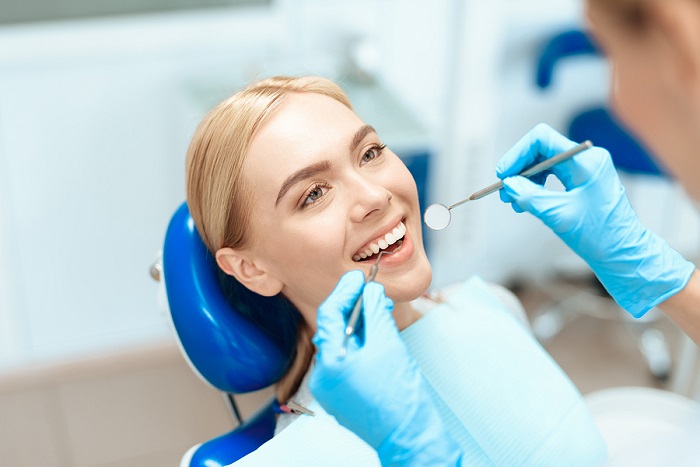
Why Dentists Offer IV Sedation

Most Common Dental Emergencies
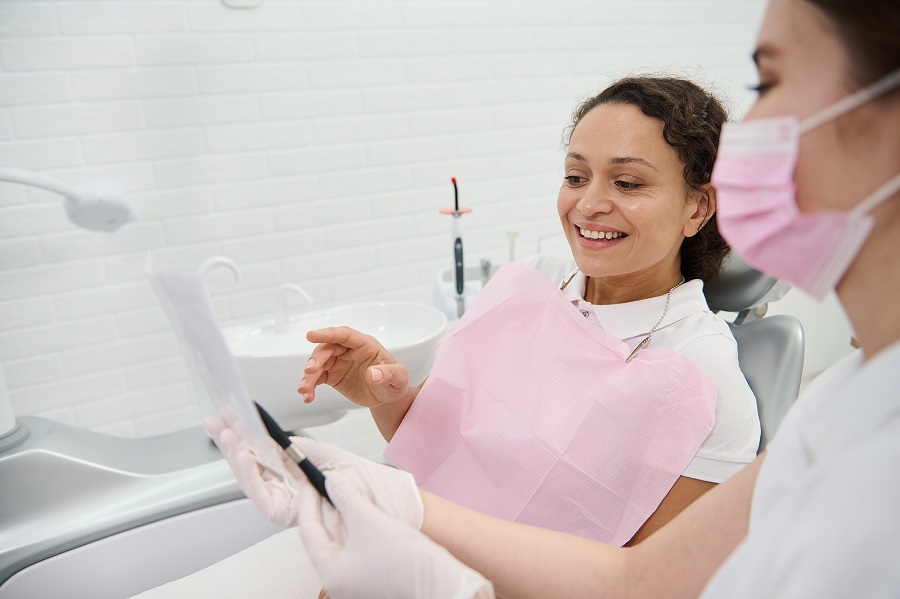
The Anatomy of a Human Tooth

Cosmetic Dental Crowns: Pros and Cons
Office Hours
MON - THU 9:00 am - 5:00 pm
FRI 9:00 am - 1:00 pm
SAT - SUN Closed
Address: 10187 Cleary Blvd STE 103, Plantation, FL 33324
Email: [email protected]
Phone: (954) 368-6264

10187 Cleary Blvd STE 103, Plantation, FL 33324
(954) 368-6264
- © Copyright 2024 GrowthPlug, Inc
- Privacy Policy
- Terms and Conditions
- Accessibility Statement
Dental Hygiene Visits and Overall Health During COVID-19
by Dr. Jerry Baluta, DDS
It’s been over a year since we all began living in our COVID-19 inspired modified reality. As industry professionals, we know the importance of regular dental hygiene appointments and we have a responsibility to ensure our patients are protecting their oral health.
In a recent survey conducted by the CDHA, it was found that 6 in 10 Canadians have not seen their dental hygienist since March 2020.
As you know, there is a strong connection between oral health and the rest of the body. A multitude of research exists on the link between periodontitis and systemic health problems.
Without proper oral hygiene and professional care, defences against bacteria are reduced, cavities can develop, and gum disease can take hold. Over time, this can exacerbate underlying conditions, and even contribute to cardiovascular disease, diabetes, or stroke.
Now, more than ever, it is important to have a strong immune system to fight off viruses and infections, and yet patients are not making that connection back to dental hygiene. We have a duty of care to ensure our patients understand the importance of being seen for their professional cleanings.
Why are patients not keeping their dental hygiene appointments? Surprisingly, the number one reason is not due to concerns about possible exposure to COVID-19. The top reason patients cited for not keeping their dental hygiene visit is that they view it as something that can be put off. In other words, they don’t recognize the significant role it plays in their health and well-being.
What does this tell us? This tells us that we as dental professionals have an opportunity to do a better job educating patients on the connection between oral health and systemic health, so that patients understand how important it is to keep their dental hygiene appointments.
What can we do about it? Closing this knowledge gap requires consistent and frequent communication with patients across all roles within our practices in order to be effective.
There are simple, effective strategies that you can incorporate into your practices today to promote the importance of dental hygiene visits.
Dentistry plays a fundamental role in the overall health of our patients. Helping our patients understand the importance of dental hygiene can only bring about positive results for both patients and practices.
About the Author

RELATED NEWS

U.K. Woman Grateful for Dentist Appointment That Led to Cancer Diagnosis
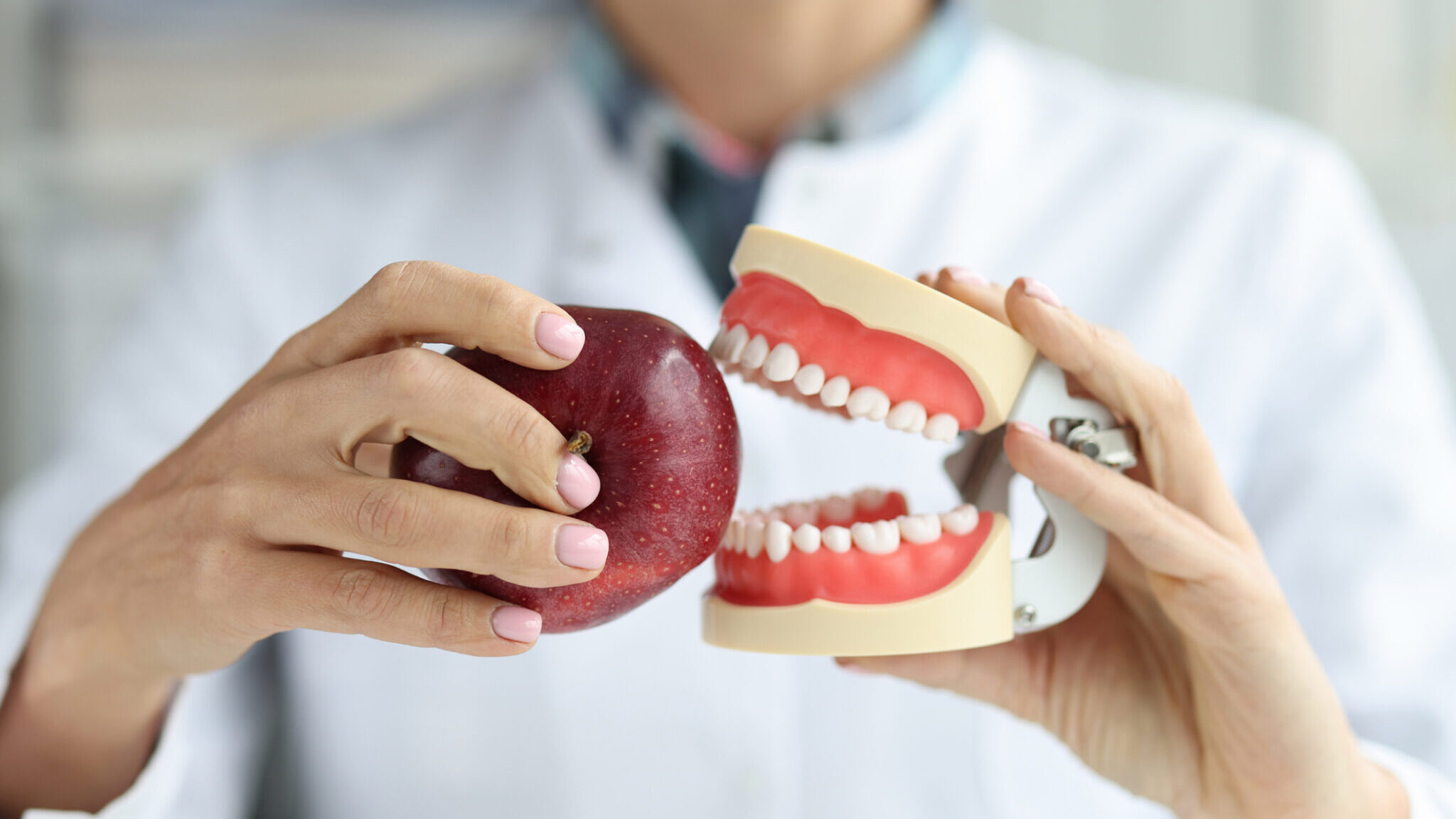
The Ability to Chew Properly May Improve Blood Sugar Levels in Patients with Type 2 Diabetes

Dental Hygienists Put Their Purple On for Oral Health and National Dental Hygienists Week
A connection between diabetes, oral health and dementia highlights the importance of dental care, poor oral health may increase risk of meniere disease, early study suggests poor oral health can affect brain later in life, popular podcast ‘a tale of two hygienists’ features tempstars ceo james younger, dental hygienists encourage more men to join ‘female-dominated’ profession on p.e.i., a momentous day for children’s oral health, montreal dental hygienists give back to the community with free oral hygiene clinic, diabetes & dental hygiene, dental hygienists praise new federal dental care becoming law.

Women in Oral Health Care 2023

Technology: Today & Tomorrow

HPV-Related Head and Neck Cancers. Meet the Authors.

The CEO Challenge: Balancing Emotional Intelligence and Critical Thinking

Enhancing Dental Office Safety: Integrating Technology and Best Practices

How Sustainable are Your “Green” Marketing Practices?

Recruitment! Attracting A Players to Grow Your Dream Practice | Weekly Wisdom

Medical Emergencies at the Dental Office | Weekly Wisdom

To Save the Tooth or Not Save the Tooth | Weekly Wisdom
We use cookies to make your website experience better. By accepting this notice and continuing to browse our website you confirm you accept our Terms of Use & Privacy Policy .
read more >>

- Call Us: 0289 188 3513
- Make a Referral
Dental Care
Skin clinic.

Six Month Smiles

Perfect Smile Makeover
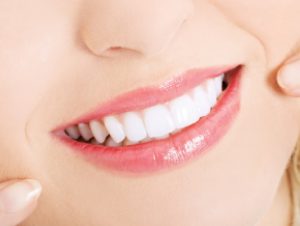
Bridal Smile Make Over
- Emergency Care
- New Patients
- Book An Appointment

What to expect when you visit the dental hygienist
Recent posts.
- Beyond Stained Teeth: How Tobacco Ruins Your Breath
- Anaesthesia and Children’s Dentistry: Creating a Positive Experience
- Usher in Spring with a Perfect Smile Makeover
- Protecting young teeth at home and by using Children Dental Care
- What happens when you or your child suffers a broken tooth
NEW PATIENT REGISTRATION
A dental hygienist works alongside dentists to offer ‘preventative’ dental health care. In other words, they work with patients to provide ‘deep clean’ scale and polish treatments. They also offer advice on oral health and teeth cleaning techniques to help ward off cavities and other dental problems. The dental hygienist is well positioned to look out for early signs of larger issues and potential problems. This enables them to alert the dentist and patient and help support diagnoses. Their early intervention also means that treatment can start sooner, rather than later. This can be critical in some medical conditions.
Nervous about visiting the dental hygienist? Don’t be!
Many people feel anxious or frightened at the prosect of visiting a dental surgery. However, regular check-ups are vital for dental hygiene. Including an appointment with the dental hygienist in your oral health care routines can actually help allay fears, as they can get rid of a lot of the plaque and bacteria that lead to cavities and other painful issues. The advice they give can also help you keep your teeth in better condition at home, and so give you more confidence when faced with your next dental check-up.
How to prepare in advance
Ion order to get the most out of your dental hygienist appointment, it is important to make some preparations beforehand. Always double check your appointment date and time. You can be charged full price if you miss an appointment, or do not give enough notice when cancelling or trying to rearrange. Always brush and floss your teeth before your appointment, and avoid any strongly smelling food or drink. If you wear a dental appliance, bring it with you. The dental hygienist may want to check that it is not causing any discomfort or problems for you. Write down any questions you have, as you may forget to ask them if you are nervous or get distracted during the appointment.
What will the dental hygienist need to know about me and my teeth?
If you are new to the practice, the dental hygienist will need to take a full medical history from you. This is to highlight any potential issues that may affect their treatment. Take a list of regular medications with you, as this will also be useful information to provide. You will then be asked about your normal tooth brushing routines. For example, whether you use an electric or manual toothbrush, how you go about flossing, how often you brush your teeth and what type of toothpaste and mouthwash you prefer. It is important to be honest, as your dental hygienist will be better placed to help you. They will not judge – they will have doubtless seen it all before!
What happens at the appointment?
After you have provided all your relevant details, the examination will begin. The dental hygienist will check your teeth and gums, looking for irregularities. This includes unusually high build-up of plaque, cracked or damaged teeth, signs of gum disease, receding gums etc. Next, you will receive a professional clean, called a scale and polish. The scaling helps remove the plaque, particularly in the harder-to-reach areas of the mouth. You remain in charge throughout the procedure and can alert your hygienist at any time if you feel uncomfortable, or want a short break. The dental hygienist will then polish your teeth, cleaning them and smoothing the surface of the enamel to make it harder for bacteria to cling on. This also helps to remove stains, such as coffee, tea or red wine.
Aftercare – how to make the most of the treatment provided
After the appointment, you should leave with your teeth and mouth feeling really clean. To maximise the feeling and help keep things as healthy as possible, follow up on any advice that you have been given. If you have been recommended any new products, purchase or order them straight away before you forget. Practise any new techniques that you have been shown when you next brush your teeth. It is also a good ideal to book your next dental hygienist session straight away before you leave the practice. That way, you won’t forget, and you can normally have a better selection of available dates and times by booking earlier in advance.

Get Connected
Contact info.
- 13 The Parade, Donaghadee, Co Down, Northern Ireland, BT21 0AE
- [email protected]
- 0289 188 3513
Opening Times
Useful links.
© Harbour Dental Practice 2023
Dental website: Q-Online Marketing Agency
- Complaints Policy
- Cookies Policy
FREE CONSULTATIONS
Enjoy a 3D smile simulation of your future smile during your consultation. Plus, receive complimentary teeth whitening and retainers upon completion of your treatment!

4.9 BASED ON 200 REVIEWS
What you can expect during a dental hygiene visit
Visiting your dental hygienist on a regular basis is vital to maintain and improving your oral and overall health. In the UK, gum disease is the number one cause of tooth loss in adults and studies have shown that frequent visits to the dentist and the dental hygienist can help prevent gum disease and other oral health issues, which may prove dangerous in the long run. Dental hygienists work closely with dentists and other health professionals to provide optimal oral health and preventive treatments.

The procedure
During your appointment, the dental hygienist will begin by reviewing your medical history, including documenting any medications you are taking. This is an important step to ensure they are aware of any medical conditions you may have that could influence your oral routine. The dental hygienist will also ask about your dental history such as previous dental work you have had done, your oral hygiene routine and any concerns you have about your teeth.
A scale and polish treatment will likely include scaling and root planning to remove plaque from your teeth and gums. This can be achieved either through electronic or hand instruments. Once plaque has been removed from your teeth, your dental hygienist will polish them using a special paste. After this process, your dental hygienist will also share information with you related to brushing and flossing, the risk of dental decay, smoking cessation as well as nutrition information, based on your individual needs and lifestyle.
Based on the condition of your teeth and gums, your dental hygienist will determine an ongoing cleaning schedule and identify any further matters that need to be addressed. Having regular dental check-ups is important for maintaining dental health and early intervention. To schedule your appointment, contact us today.
Fields with (*) are required. Please contact us via this website or email without disclosing confidential information.
A .gov website belongs to an official government organization in the United States.
A lock ( ) or https:// means you've safely connected to the .gov website. Share sensitive information only on official, secure websites.
- Summary of Infection Prevention Practices in Dental Settings: Basic Expectations for Safe Care
- Best Practices in Dental Infection Prevention and Control
- Foundations: Building the Safest Dental Visit
- Basic Expectations for Safe Care Training Modules
- CDC DentalCheck Mobile App
- View All Home
At a glance
- This course provides dental health care personnel the information they need to make infection prevention and control a priority wherever dental care is delivered.
- This course provides three free ADA CERP Continuing Education Units through an agreement with the Association for Dental Safety.
Start Course
Course overview
Foundations: Building the Safest Dental Visit is a web-based, interactive training designed to increase adherence to established infection prevention and control guidelines. This course provides an overview of the basic expectations for safe care—the principles of infection prevention and control that form the basis for CDC recommendations for dental health care settings.

Foundations can typically be completed in 3 hours or less if taken in one session. The training is designed to save learners' progress across multiple sessions, so learners can take the course at their own pace.
Foundations is a free resource. The course is available through CDC TRAIN , an affiliate of the Public Health Foundation's TRAIN Learning Network. This learning network provides access to more than 1,000 courses developed by the CDC programs, grantees, and other funded partners.
Signing into CDC's Training Group
If you have a TRAIN account from another affiliate, like a state health department, you may need to add the CDC group to your profile for the training to appear. To do so, select your name at the top right, then “Your Profile,” and then the Manage Groups tab. Select the “Join Another Group” button, and search for CDC.
Foundations training modules
- Module 1: Foundations of Infection Prevention and Control introduces infection prevention and control for dental settings; reviews existing guidelines, recommendations, and resources; and describes the fundamentals of evaluating dental infection prevention programs.
- Module 2: Protecting Patients, Protecting Yourself reviews hand hygiene, personal protective equipment, respiratory hygiene/cough etiquette, sharps safety, and safe injection practices.
- Module 3: Sterilization, Disinfection, and the Dental Environment reviews the sterilization process, environmental infection prevention and control guidelines, and dental unit waterline safety.
Who this training is for
- Dental health care personnel.
- Infection prevention coordinators.
- Dental educators.
- Dental consultants.
- Dental, dental hygiene, and dental assisting students.
Continuing education units
This continuing education activity has been planned and implemented in accordance with the standards of the American Dental Association (ADA) Continuing Education Recognition Program (CERP) through joint efforts between the Association for Dental Safety (ADS) , formerly known as the Organization for Safety, Asepsis, and Prevention, and CDC's Division of Oral Health.
ADS is a recognized CE provider through ADA CERP. ADA CERP is a service of the ADA to assist dental professionals in identifying quality providers of continuing dental education. ADA CERP does not approve or endorse individual courses or instructors, nor does it imply acceptance of credit hours by boards of dentistry. ADS has designated this activity for 3 CE credits.
Learners who complete the Foundations training will receive a certificate of completion through CDC TRAIN. Specific instructions for obtaining CE credit are located on the Foundations course completion certificate. Learners do not need to be a member of ADS to receive CE credit but may need to register on that organization's website.
Who is ADS?
ADS, a dental membership association, is a community of clinicians, educators, researchers, and industry representatives who advocate for safe and infection-free delivery of oral health care. Founded in 1984, ADS is dedicated to education, research, service, and policy development to promote safety and the control of infectious diseases in dental healthcare settings worldwide.
ADS offers extensive online resources, publications, FAQs, checklists, and toolkits that help dental professionals deliver the safest dental visit possible for their patients. ADS also provides online and live courses to help advance the level of knowledge and skill of dental health care personnel.
Training resources
- Fundamentals of Infection Prevention and Control [VIDEO]
- Donning Personal Protective Equipment [VIDEO]
- Doffing Personal Protective Equipment [VIDEO]
- Instrument Reprocessing [VIDEO]
Dental Infection Prevention and Control
CDC protects patients and providers by developing recommendations that guide infection prevention and control practices wherever dental care is delivered.

Regular Hygiene Visits
An integral part of optimal oral health is scheduling routine hygiene visits. Depending on your oral health you should schedule an appointment every 3-6 months. We at Frangella Dental are committed to providing the highest quality dentistry to all of our patients. With this goal in mind, we created what we believe to be the criteria of a healthy mouth. Routine dental visits allow us to help maintain that standard. During your visit we will clean then examine your teeth, periodontal condition and complete an oral cancer screening. Depending on when your last set of x-rays we may take check-up x-rays as well. afterward we will give recommendations on what you can do at home to maintain a healthy mouth.
Now Accepting New Patients
Or Call (212) 245-2888
Advances in dental technology provide nearly limitless possibilities
Our non-invasive methods allow patients to receive needed dental care with minimal interrupting to their daily lifestyles. In many cases, we can perform cosmetic or restorative dental treatments in just one visit to our Manhattan dental office.
At Frangella Dental, you can relax while we revitalize your smile.

Let our team create your perfect smile!
Frangella dental.
Offering advanced techniques in Cosmetic and General Dentistry in New York City.
200 W. 57th Street, Suite 1405 New York, NY 10019
(212) 245-2888 [email protected]

How Often Should You Visit a Dental Hygienist
- posted: Apr. 09, 2019
- Dental Hygienist
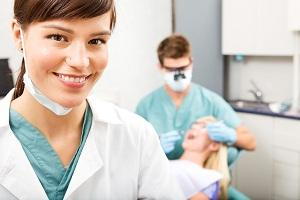
What Does a Dental Hygienist Do? A dental hygienist is responsible for cleaning your teeth thoroughly at regular appointments and helping you keep your entire oral cavity in good condition. This professional will also check your teeth and gums for the early signs of gum disease, tooth decay, or other potential concerns. A hygienist specializes in preventative dental medicine.
How Often Should You See Your Hygienist? The American Dental Association recommends that you see your dental hygienist at least twice per year, about six months apart, for cleanings, X-rays, (if needed), and a review of your dental history. You should add an extra visit or two each year if you have had past problems with dental decay or gum disease. Knowing that you have a standing appointment with your New Haven, CT, hygienist for a dental cleaning should motivate you to want to take good care of your teeth between visits—it feels good to get a positive report.
Make Your Hygienist Proud Between visits, adopting simple daily dental hygiene care habits will make it clear to your New Haven, CT, hygienist that you are serious about maintaining good dental health. Keep these tips in mind:
- Spend an extra minute or so brushing your teeth to ensure that you remove all signs of food residue. Use your tongue to check the surfaces of your teeth. - When you floss, spend sufficient time in each quadrant of your mouth completely clearing food from between the teeth and around the gumline. - If you feel or see hardened calculus forming around your teeth, make an appointment for a cleaning as soon as it’s convenient.
Schedule Your Next Appointment It may be time for you to see your dental hygienist for a checkup, so make the call today. Contact the New Haven, CT, office of Dr. Francesco Maratta to schedule a visit with a dental hygienist.
The first step towards a beautiful, healthy smile is to schedule an appointment.

ⓒ 2023 All Rights Reserved.
Phone: (203)773-1701
Address: 2 Church Street South, Suite 216 New Haven, CT 06519

Monday - 8:00 AM - 5:00 PM
Tuesday - 8:00am - 5:00pm
Wednesday - 8:00am - 3:30pm
Thursday - 8:00am - 5:00pm
Friday - 8:00am - 3:30pm
Call For Financing Options

WHERE IS YOUR PAIN?
Learn how we can help with your pain.
- Copyright © 2024 MH Sub I, LLC dba Officite
- Privacy Policy
How To Treat Your Bleeding Gums in Pregnancy

When pregnant women wonder “what to expect when they’re expecting,” they may not expect their gums to bleed. And amid all the changes a woman’s body experiences during pregnancy, bleeding gums may seem a minor issue.
Bleeding gums during pregnancy, however, are a symptom of the earliest stage of periodontal disease (gum disease). If left untreated, this condition poses potential risks to both the expectant mother and her unborn child.
Keep reading for an overview of the relationship between periodontal disease and pregnancy.
What Causes Bleeding Gums During Pregnancy?
Gingivitis is the earliest stage of periodontal disease, characterized by tender, swollen, and bleeding gums.
Pregnancy gingivitis is common. Somewhere between 60% and 75% of pregnant women experience it . Pregnancy gingivitis typically begins around the second or third month of pregnancy. It can continue throughout the gestational period.
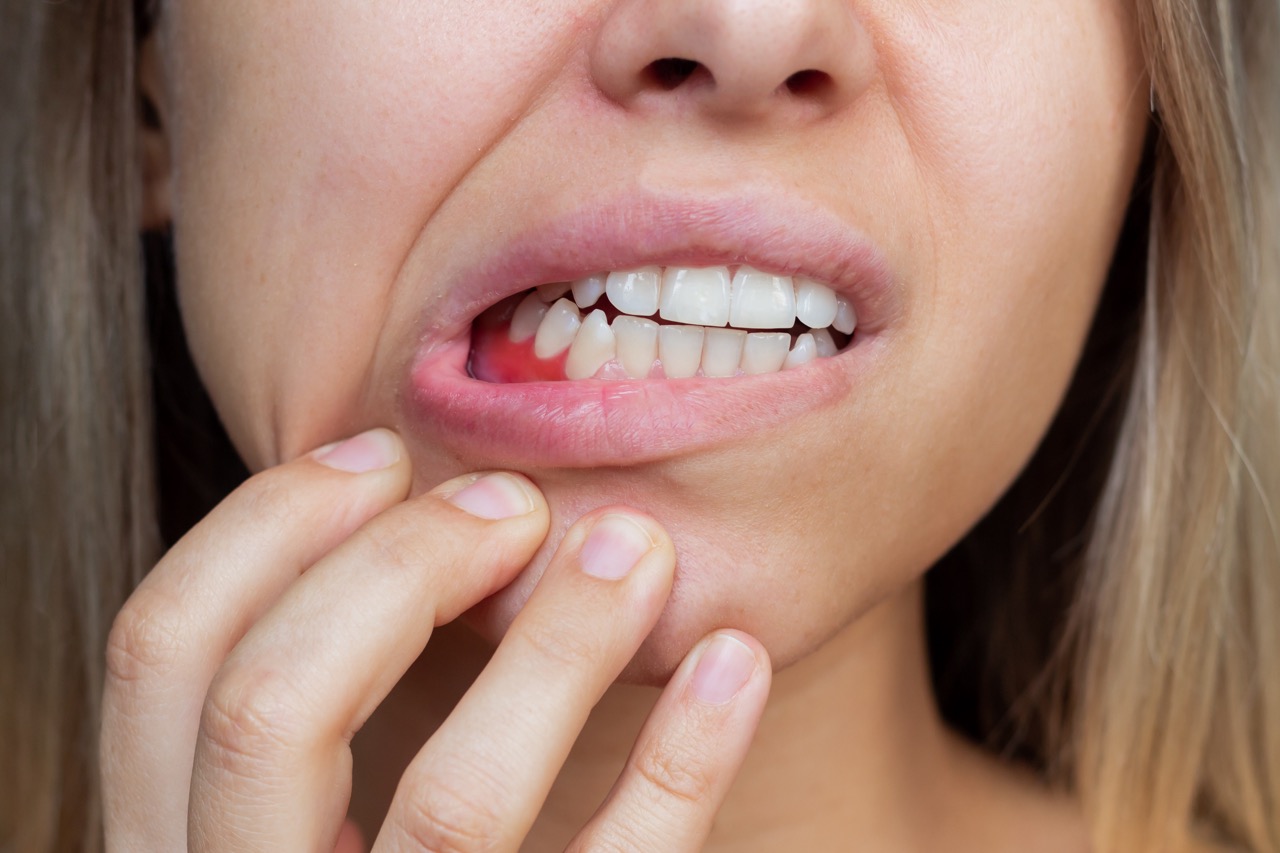
Why are bleeding gums and pregnancy closely associated?
Hormonal Changes
Hormonal changes in pregnancy—especially increased progesterone levels —can cause gums to become more sensitive and vulnerable to plaque buildup and inflammation. This inflammation, in turn, leads to bleeding while brushing or flossing.
The rise in hormone levels also changes how the body responds to harmful bacteria in the mouth. Normally, the immune system fights off such bacteria to keep the gums healthy. But pregnancy weakens a woman’s immune response, leaving her more vulnerable to bacterial infections like gum disease.
Additionally, hormonal fluctuations can increase women’s risk of pregnancy tumors (pyogenic granulomas). These noncancerous growths typically appear during the second trimester. They are characterized by red, swollen, and bleeding gums. While these tumors aren’t harmful, a dentist should evaluate and treat them to prevent any discomfort or complications.
Increased Blood Volume
Another contributing factor to bleeding gums in pregnancy is increased blood volume. The body makes more blood to support both the mother and the developing fetus. The tiny blood vessels in the gums can become more sensitive and prone to bleeding, and the gums can appear swollen.
Poor Oral Hygiene and Other Factors
Poor oral hygiene can exacerbate pregnancy gingivitis, as plaque buildup can further irritate the gums. Many pregnant women, particularly those experiencing morning sickness, find it challenging to keep a consistent dental hygiene routine.
Moreover, certain habits or conditions can make bleeding gums during pregnancy worse. For example, teeth grinding or clenching (bruxism) can put added pressure on the gums and lead to bleeding.
Smoking and consuming tobacco products can also compromise oral health and contribute to gum bleeding. They also pose serious health risks to both mother and unborn child.
What Should I Do About Bleeding Gums When I’m Pregnant?
Untreated gingivitis can progress to a more severe form of periodontal disease called periodontitis, resulting in tooth loss and other serious oral health complications.
Periodontitis during pregnancy can negatively impact the overall health of both the mother and the developing baby. Research suggests periodontitis in pregnancy is linked to various adverse pregnancy outcomes, including premature birth, low birth weight, and preeclampsia.
How can pregnant women manage bleeding gums during pregnancy?
1. Establish a good oral hygiene routine.
Brush at least twice a day with a soft-bristled toothbrush and fluoride toothpaste. Flossing daily is equally important, as it helps remove plaque and food particles from areas a toothbrush can’t reach. Using an antimicrobial mouthwash can also reduce inflammation and prevent bacterial growth.
2. Make any needed lifestyle adjustments.
Eating a balanced diet rich in fruits, vegetables, and calcium can promote dental health. Avoiding sugary foods and acidic foods and beverages can help prevent tooth decay and minimize gum irritation. Staying hydrated is essential, too, as it helps maintain saliva flow—a natural defense against oral bacteria.
3. Visit the dentist during pregnancy.
Expecting mothers should continue to schedule routine checkups with their dentists. Healthy teeth and gums contribute to overall well-being. Dental professionals can assess and treat any existing issues, provide advice on proper oral hygiene practices, and offer recommendations for dental products safe to use during pregnancy.
Visit Penn Dental Medicine as Part of Your Healthy Pregnancy
While bleeding gums in pregnancy can be unsettling, the condition is relatively common and, when addressed quickly, highly treatable.
At Penn Dental Medicine (PDM) , our skilled dental experts can help you manage periodontal disease during pregnancy. We can help you understand what’s causing your bleeding gums and provide you with the quality, compassionate dental treatments and other care you need to keep your gums healthy.
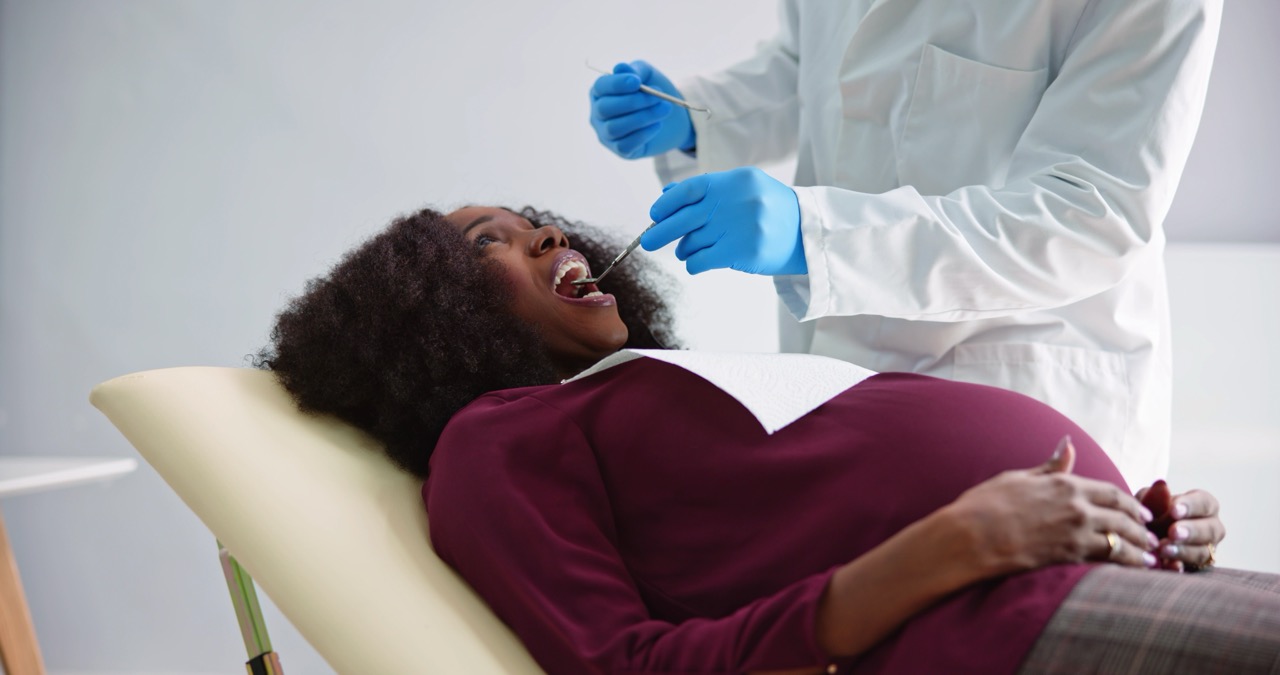
Your healthy mouth is a vital component of your healthy pregnancy. Trust PDM to help you take the best care of yourself and your baby.
Make your appointment with us online today or call us at 215-898-8965.
- Endodontics
- General Dentistry
- Oral Medicine
- Orthodontics
- Pediatric Dentistry
- Periodontics
- Prosthodontics
- Teeth Whitening
- Uncategorized
Information Library
Start Reading
Related Posts
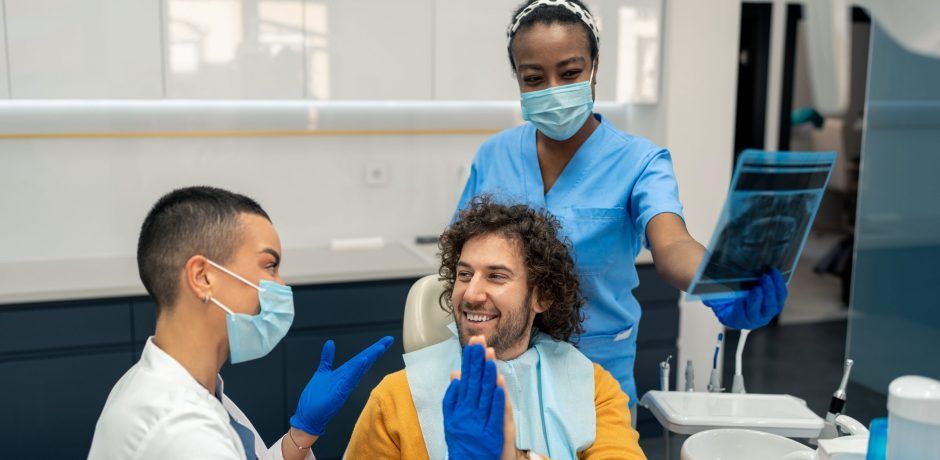
What is a Periodontist—And Why Do You Need To Know?

How You Can Get Inexpensive Dental Implants in Philadelphia
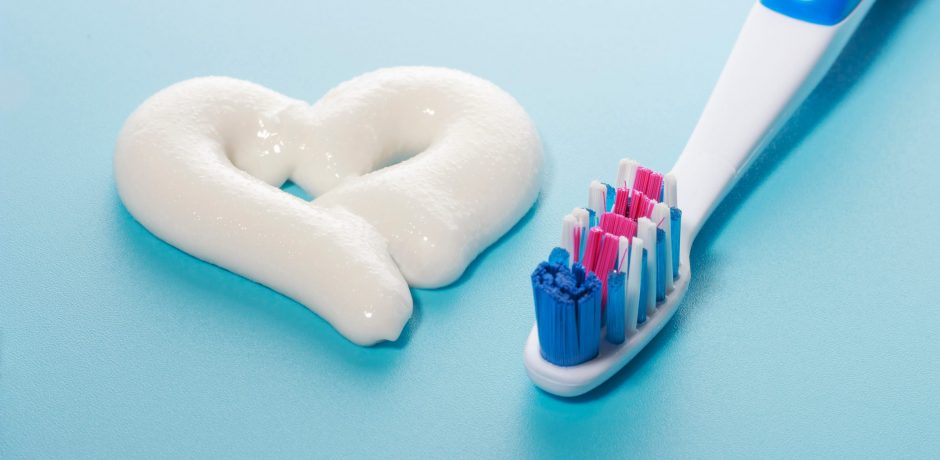
What’s the Link Between Oral Health and Heart Disease?
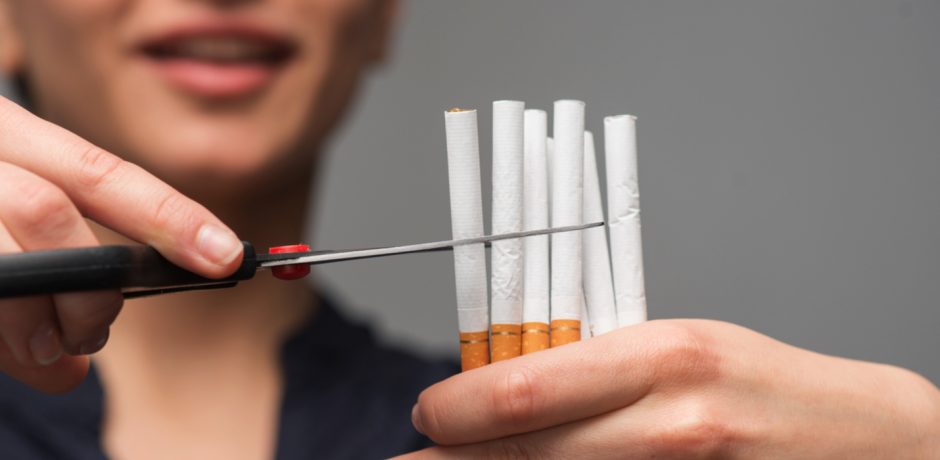
Tobacco Effects and Your Health
Patient services.
- Crowns and Bridges
- Dental Implants
- Robert Schattner Center University of Pennsylvania School of Dental Medicine 240 S. 40th Street Philadelphia, PA 19104
- 215-898-8965
- [email protected]

- Emergency Services
- Privacy Policy
- Report Accessibility Issues and Get Help
- Report Copyright Infringement

Dental hygiene poverty is on the rise - here’s how you can help struggling families
As some kids head back to school unable to brush their teeth, Boots is on a mission to get more dental products donated to The Hygiene Bank

- 10:18, 4 Sep 2024
- Updated 19:07, 4 Sep 2024
Toothbrushes and toothpaste are becoming “luxury items” for more and more families in the UK.
In fact, the rising cost of living means many people are being forced to choose between paying for food and bills or buying essential toiletries and cleaning products.
So says a new report by The Hygiene Bank*, the grassroots charity seeking to end hygiene poverty while providing hygiene essentials to those in need.
Dental hygiene is one of the many things that suffer, according to the report:
- Two out of three (65%) parents experiencing hygiene poverty have had to choose between buying hygiene products for themselves or for their children.
- Three in 10 parents (29%) experiencing hygiene poverty say their children are now having to use lesser-quality dental care products than before.
- Nearly a quarter (23%) reported their children’s dental hygiene has worsened in the past year.
Hygiene poverty can have a negative impact both on people’s physical and mental health.
The report found that not being able to afford basic toiletries causes people embarrassment and shame, which can lead to increased stress, anxiety and depression.
“The mental anguish is relentless, as the shame and anxiety of my appearance and hygiene eat away at my self-worth,” said one participant.
Another added, “The physical toll is unbearable. I endure constant discomfort and health risks, such as skin infections and dental problems, because I can’t afford essentials like soap and toothpaste.”
One parent said, “My children come first and, at times, I have to go without so they don’t.” Another, “I felt like a terrible mum because I was unable to provide the basics for my children.”
As well as tooth decay and bleeding gums caused by poor dental hygiene, children experiencing hygiene poverty face social challenges, including bullying and social isolation at school. It can affect their behaviour, their attendance and performance in school, as well as their confidence, friendships and hobbies.
Children’s dentist and Colgate ambassador Dr Julia Hurry says, “I’ve seen families with multiple children who are sharing one toothbrush between them. In some areas of England almost one in two five-year-olds have obvious holes in their teeth. With reduced access to basic toothbrushing tools, this is likely to get even higher.”
As the severity of dental hygiene poverty in the UK increases, Boots has launched its Brush with Boots campaign. And as it celebrates its 175 birthday, it is donating 175,000 of its own-brand toothbrushes and tubes of toothpaste to The Hygiene Bank to distribute to families that have been pulled into hygiene poverty.
And you can help too. Boots has created donation points in more than 500 of its stores, so you can pop in, buy a toothbrush, toothpaste or other dental hygiene items and add them to the box.
Boots is one of the founding partners and the official retail partner of The Hygiene Bank. Since joining forces in 2019 they have been working together to help end hygiene poverty.
Colgate's step-by-step guide to good dental care
- Brush your teeth twice a day with a fluoride toothpaste – before bed and on one other occasion. Spit, don't rinse as rinsing washes the fluoride protection away.
- Limit sugary snacks and drinks – remember to eat lots of fruit and vegetables, and try to limit sugary drinks. Water or a glass of milk is healthier for your teeth.
- Supervise your child during toothbrushing until they are at least seven years old.
- Visit your dentist regularly – ensure you and your child see your dental professional regularly for check-ups and other required treatments.
- Change your toothbrush every three months – if the bristles are looking worn, they won't remove as much plaque so it's time for a new one! Click here for more advice on dental and oral health
Visit boots.com/the-hygiene-bank to donate online or find your nearest Boots donation point.
*Source: The Hygiene Bank: Hygiene Poverty in 2024, May 2024
The Hygiene Bank is a registered charity in England and Wales number: 1181267 and Scotland: SC049895
MORE ON poverty

IMAGES
VIDEO
COMMENTS
Hopefully, this blog will help you understand the importance of a dental hygiene visit and prepare you for taking good care of your teeth and gums! To know more or book teeth cleaning appointment, contact Green Meadow Dental, 3579 B Berlin Turnpike, Newington CT 06111, (860)-865-0056.
Oral hygiene is an important part of your overall health. Learn how to take care of your teeth with these eight dentist-backed tips.
Also known as a six-month cleaning or prophylaxis, this dental hygienist appointment is for healthy dental patients and is an essential step to helping ensure long-lasting oral health. It's a great way to ensure your mouth is healthy and to walk out with clean, polished teeth. Here's what you can expect during a typical dental hygienist ...
Still, depending on what your dentist or dental hygienist observes in your mouth, they might do other exams during your visit.
What happens at a dentist appointment? Learn about the dental hygiene appointment breakdown time and how long other dental procedures take.
Dental visits aren't just for cavities and teeth cleaning anymore. During a check-up, your dental hygienist and dentist assess the overall health of your mouth and gums.
While toothpaste, dental floss, mouthwash, and a toothbrush should be a part of everyone's oral hygiene routine, certain people require additional or specialized tools to properly care for the mouth.
Find a dental hygienist near you so you can get your teeth cleaned and your mouth screened for oral disease and tooth decay.
Adults should visit a dentist at least every six months. Learn what happens during routine dental exams and teeth cleanings. Prepare for your next visit.
October 1, 2015 October is National Dental Hygiene Month! It's the perfect time of year to talk about the surprising thoroughness of oral health and overall health care you can expect during your dental hygiene visit.
Dental hygienists must earn a 2-year associate's degree in dental hygiene. A bachelor's degree (4-year college degree) and a master's degree in dental hygiene are available, but most hygienists do not have this background. Both dental hygienists and dentists must pass exams in order to receive their license to work in the dental profession.
As industry professionals, we know the importance of regular dental hygiene appointments and we have a responsibility to ensure our patients are protecting their oral health.
What to expect when you visit the dental hygienist A dental hygienist works alongside dentists to offer 'preventative' dental health care. In other words, they work with patients to provide 'deep clean' scale and polish treatments.
What you can expect during a dental hygiene visit Visiting your dental hygienist on a regular basis is vital to maintain and improving your oral and overall health. In the UK, gum disease is the number one cause of tooth loss in adults and studies have shown that frequent visits to the dentist and the dental hygienist can help prevent gum disease and other oral health issues, which may prove ...
Set aside enough time to thoroughly audit each patient's chart for the day to make sure they're scheduled for the correct procedures, prepare your hygiene trays with instruments and disposables, set up your operatory equipment, fill water bottles, and become aware of possible scheduling challenges so that plans can be implemented to ...
WHEN Talk about when your patient needs to return for their hygiene appointment, when they need to call that specialist you just gave a referral to and when they need it is very important that your patient schedules now and returns at the appropriate interval of time for their next routine hygiene appointment, etc.
Module 1: Foundations of Infection Prevention and Control introduces infection prevention and control for dental settings; reviews existing guidelines, recommendations, and resources; and describes the fundamentals of evaluating dental infection prevention programs. Module 2: Protecting Patients, Protecting Yourself reviews hand hygiene ...
Frangella Dental - What to expect at a Regular Hygiene Visits. Schedule an appointment with us in Midtown Manhattan. Accepting New Patients.
Dental care is overlooked as an important aspect of overall health. VDH believes that everyone deserves the care that will result in beautiful smiles. Getting it changes lives. We recognize that the first step may be the hardest. So, our hygienists provide support and compassion for the whole patient.
Meet the Dental Team Office Additional Medical Conditions We Treat Financial Options Online Payment Services Photos Cosmetic Dentistry Dental Implants Dentures Teeth Whitening See More Services Resources Post-Op Instructions Crown Lengthening Post Operative Instructions
Visit Penn Dental Medicine as Part of Your Healthy Pregnancy. While bleeding gums in pregnancy can be unsettling, the condition is relatively common and, when addressed quickly, highly treatable. At Penn Dental Medicine (PDM), our skilled dental experts can help you manage periodontal disease during pregnancy. We can help you understand what ...
Dental hygiene is one of the many things that suffer, according to the report: ... Visit your dentist regularly - ensure you and your child see your dental professional regularly for check-ups ...